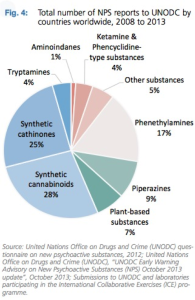Is a Gram Better than a Damn?
I first became aware of dietary supplements such as DMAA a few years ago. I was meeting with an individual at an outpatient drug treatment center to work out how his urine test came up positive for stimulants when he insisted he hadn’t taken any. It turns out he had been encouraged by a friend to try a pre-workout dietary supplement, “Jack3d,” that was supposed to improve his workout. The market has exploded since then with various analog stimulants being sold as “smart drugs” or brain enhancers, as well as bodybuilding, athletic and weight-loss enhancers.
Andrew Seaman on Yahoo News reported on a joint announcement from Harvard Medical School and two public health organizations of a study they conducted that found the stimulant DMBA in multiple dietary supplements. DMBA is an analog of the synthetic stimulant DMMA. In April of 2013, the FDA issued a warning that DMMA was associated with serious illness and even death. The FDA even went as far as saying to companies known to use DMAA in dietary supplements that products containing DMAA were illegal.
Compared to its authority over drugs and other medical products, the FDA has limited authority over dietary supplements. It is required to undertake lengthy scientific studies and complex legal steps to force the removal of dietary supplements that may be unsafe or illegal—IF the company refuses to remove the products voluntarily. The issued warnings are typically complied with. After the FDA’s warning about DMAA, all but one of the 11 companies stopped making and selling products containing DMAA. The one company who didn’t was the company making Jack3D.
The new concern is for DMBA, allegedly a natural product “extracted from pouching tea.” Look at the above link for “a joint announcement” to see how similar the chemical structures of DMAA and DBMA are. Following the release of the above noted study, two U.S. senators called on the FDA to inspect products containing DMBA:
Given FDA’s existing authority, your agency should immediately launch an investigation of products containing these untested stimulants and issue warning letters to manufacturers demanding that they provide the necessary safety information. If necessary, we urge you to exercise the full range of your authority to rein in adulterated and misbranded products, which includes warning letters to facility inspections, product seizures, injunctions, and criminal prosecutions.
The problems with synthetic, analog drugs and dietary supplements are now a global concern. See other articles on Faith Seeking Understanding that address the explosion of new psychoactive substances (NPS). The analog chemical market has expanded to include so-called “smart drugs” or nootropics such as: Alleradd, Modfanil, Nuvigil, New Mood or Alpha Brain. You can find information on several different smart drugs here on the website Erowid.
Alleradd is clearly meant as a substitute for the prescription ADHD medication Adderall. As Paul Gaita noted in his article, “Brain Boosting ‘Smart Drugs’ on the Rise,” like the makers of NPS, “many smart drug manufacturers sidestep government intervention by either labeling their substance’s compounds as ‘not for human consumption’ or listing the ingredients under different brand names.” By the way, Alleradd seems to have been rebranded as OptiMind. These substances are even available on Amazon. Prescription medications beyond ADHD medications are also being used off label for increased cognitive functioning and academic performance.
Modafinil (also known by the brand name of Provigil) was approved by the FDA as a treatment for narcolepsy and other sleep disorders. But it is reported to be used by 1 in 5 students to enhance their academic performance. An estimated 90 percent of Modafinil’s users take it to increase attention, wakefulness and cognitive functioning. Armodafinil (Nuvigil) is a close cousin to Modafinil that reportedly has some benefits over Modafinil in promoting wakefulness. Airline pilots, medical personnel and others are taking them. More information on Modafinil and Armodafinil is available on Erowid.
A new study published in PLOS One suggests that the reported cognitive enhancement of Modafinil doesn’t work with everyone. And when it does, it only helps people who are not creative.
Our study backs up previous research that suggests psychostimulants improve people at the lower end of the spectrum in cognition, whereas they impair people who are at the optimum level of cognitive function — healthy people for example.
It seems that we are increasingly moving towards a society like that portrayed in Aldous Huxley’s novel, Brave New World. The phrase “a gramme is better than a damn” in the book stood for the belief that the greatest good for the greatest number of people was to minimize any negative emotions or feelings. The question we face as we continue to move inexorably closer to a “better living through chemicals” world is this: is a gram of the drug promising to make us smarter, skinnier, or more focused worth it?



